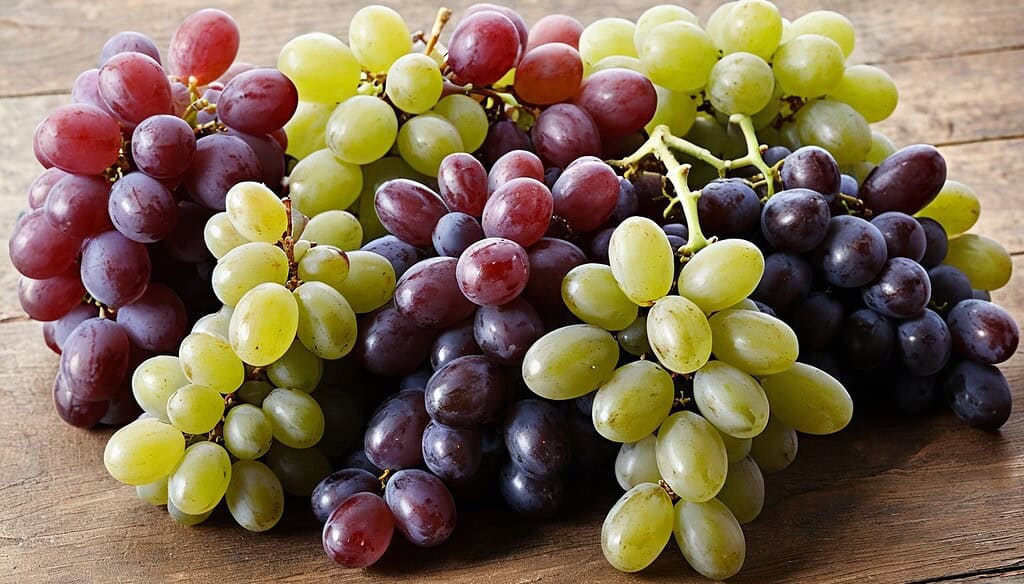Table of Contents
Introduction – Vitaceae Fruits: A Fusion of Flavor, Aroma, and Science

Picture this: you bite into a grape, and that burst of sweetness hits your tongue while the subtle floral notes dance in your nostrils. That moment captures something magical about Vitaceae fruits. The Vitaceae, commonly known as the grape family, is one of the world’s most important fruit families, valued for its versatile fruits that support global fresh markets, winemaking, and dried fruit industries. Vitaceae grapes offer more than just pleasure. They deliver a complex symphony of flavors while packing serious nutritional firepower.
The Vitaceae family spans continents and cultures, bringing together wild varieties that grow on forgotten fence rows and cultivated grapes that grace the finest tables. Each variety of Vitaceae fruits tells its own story through taste, aroma, and texture. Yet beneath these sensory delights lies fascinating science. These fruits contain compounds that researchers have linked to everything from heart health to cellular protection.
When you savor Vitaceae fruits, you engage with centuries of human cultivation and millions of years of plant evolution. The anthocyanins that create deep purple hues also fight inflammation in your body. The resveratrol that helps vines resist disease may help protect your cardiovascular system. The natural sugars that make grapes irresistible also provide quick energy for your brain and muscles.
This exploration will take you through eight remarkable grape varieties from the Vitaceae family. Each offers unique sensory experiences paired with distinct health benefits. From the crisp snap of common green grapes to the honey-sweet complexity of Scuppernong varieties, these fruits represent nature’s perfect marriage of pleasure and wellness.
Table 1: Key Compounds in Vitaceae Fruits and Their Primary Benefits
| Compound Type | Examples | Primary Health Benefits |
|---|---|---|
| Anthocyanins | Cyanidin, Malvidin | Anti-inflammatory, Eye health protection |
| Flavonoids | Quercetin, Catechin | Antioxidant activity, Heart health support |
| Stilbenes | Resveratrol, Piceid | Cardiovascular protection, Anti-aging properties |
| Phenolic Acids | Gallic acid, Ellagic acid | Cellular protection, Cancer risk reduction |
| Vitamins | Vitamin C, Vitamin K | Immune support, Bone health maintenance |
1. Vitaceae Fruits: Common Green Grapes and Their Crisp Allure
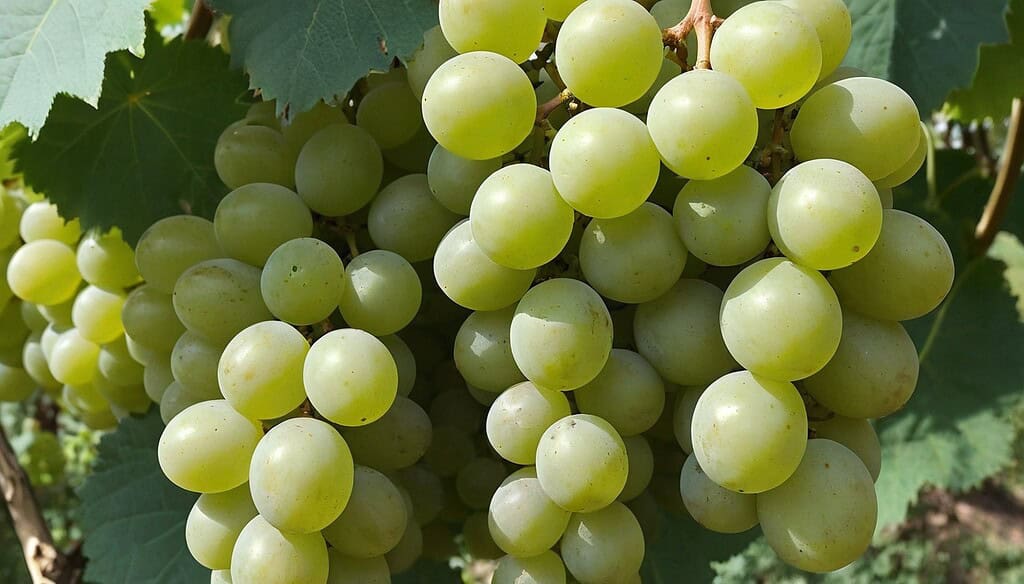
Common green grapes (Vitis vinifera) represent the gateway drug of the grape world. Their translucent skin catches light like tiny emeralds, promising the crisp texture that follows. When you bite down, that satisfying crunch releases a flood of sweet juice that carries hints of grass and sunshine.
The aroma of fresh green grapes speaks of summer afternoons and childhood memories. It combines fresh, clean notes with subtle floral undertones. This scent triggers anticipation before the first bite, preparing your palate for the refreshing experience ahead. The skin provides gentle resistance before yielding to reveal the tender flesh beneath.
Green grapes excel as nature’s hydration therapy. Their high water content makes them perfect for hot days or post-workout recovery. Each grape contains about 80% water, making them an excellent way to maintain fluid balance while satisfying sweet cravings. The natural sugars provide quick energy without the crash associated with processed sweets.
From a nutritional standpoint, these Vitaceae fruits pack impressive value into small packages. A single cup provides significant vitamin C, supporting immune function and collagen synthesis. The dietary fiber aids digestion and helps maintain stable blood sugar levels. Meanwhile, potassium supports heart function and helps regulate blood pressure.
The polyphenols in green grapes deserve special attention. These compounds give the fruit its subtle complexity while providing antioxidant protection. Studies indicate that consistent intake could promote heart health and enhance cognitive abilities. The flavonoids work synergistically to protect cells from oxidative stress.
Table 2: Nutritional Profile of Common Green Grapes (per 100g)
| Nutrient | Amount | % Daily Value |
|---|---|---|
| Calories | 62 kcal | 3% |
| Water Content | 81.3g | – |
| Vitamin C | 3.2mg | 4% |
| Dietary Fiber | 0.9g | 3% |
| Potassium | 191mg | 4% |
| Natural Sugars | 15.5g | – |
2. Vitaceae Fruits: Muscadines Through the Lens of Antioxidant Theory
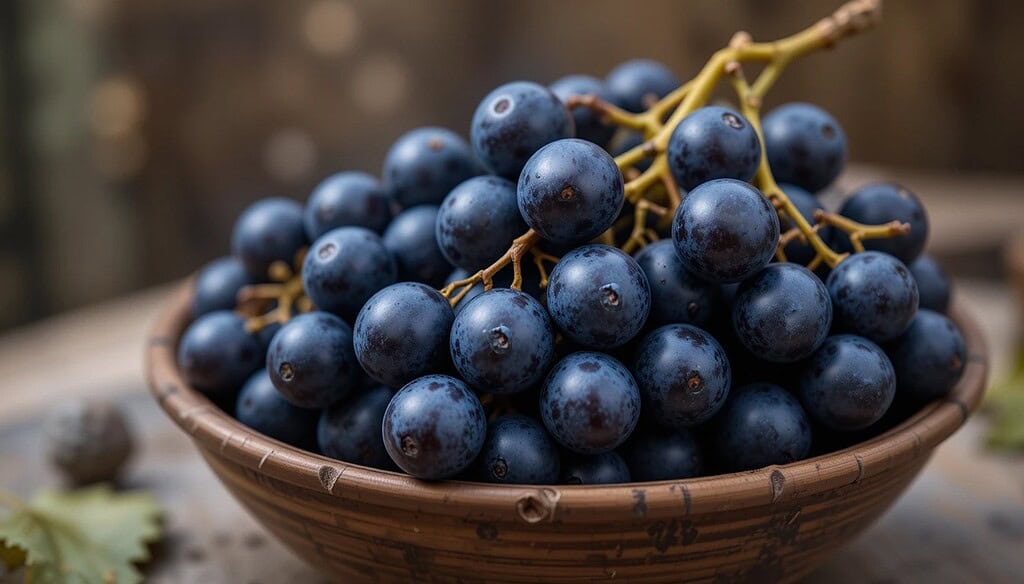
Muscadine grapes (Vitis rotundifolia) challenge everything you think you know about Vitaceae fruits. Their thick, tough skin requires a different eating technique. You pop the grape in your mouth and squeeze, releasing the pulp while discarding the skin. This process creates an intimate connection between eater and fruit that other grapes cannot match.
The flavor profile of muscadines defies simple description. These Vitaceae fruits combine intense sweetness with earthy undertones and a hint of musk. The fragrance encompasses hints of honey blended with natural herbs. Some varieties lean more toward floral sweetness, while others embrace their wild heritage with more pronounced earthy characteristics.
The Free Radical Theory of Aging provides the perfect lens for understanding muscadines’ health benefits. This theory suggests that cellular damage from free radicals accumulates over time, contributing to aging and disease. Muscadines counter this process through their exceptional antioxidant content, particularly in their thick skins.
Ellagic acid stands out among muscadines’ protective compounds. This polyphenol demonstrates a remarkable ability to neutralize free radicals before they damage cellular structures. Research indicates that ellagic acid may help protect DNA from oxidative stress, potentially reducing cancer risk and supporting healthy aging.
Resveratrol, another key compound in these grapes, activates cellular repair mechanisms. This stilbene compound helps maintain cardiovascular health by protecting blood vessel walls from damage. The concentration in muscadines often exceeds that found in other grape varieties, making them particularly valuable for heart health.
The thick skin that makes muscadines challenging to eat actually represents their greatest nutritional asset. This protective barrier concentrates the highest levels of beneficial compounds. While other grapes store antioxidants throughout their flesh, muscadines concentrate these compounds in their outer layer.
Table 3: Antioxidant Content in Muscadine Grapes (per 100g)
| Antioxidant Compound | Amount (mg) | Compared to Red Wine Grapes |
|---|---|---|
| Ellagic Acid | 1.2-2.8 | 5-10 times higher |
| Resveratrol | 0.8-1.5 | 2-3 times higher |
| Total Phenolics | 180-280 | 3-4 times higher |
| Anthocyanins | 25-45 | 2 times higher |
| Vitamin E | 0.19 | Similar levels |
3. Vitaceae Fruits: Fox Grapes and The Wild, Tangy Experience
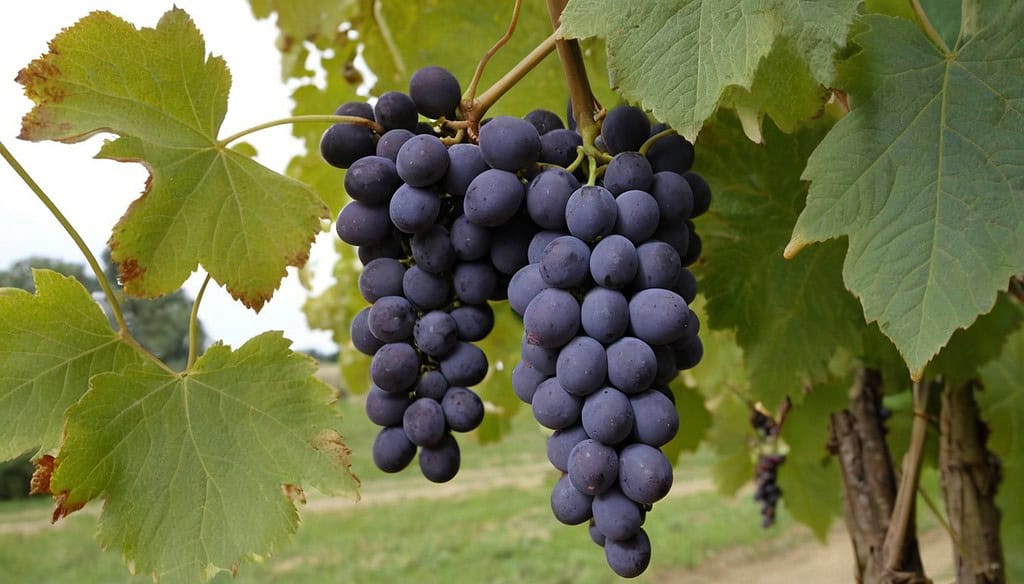
Fox grapes (Vitis labrusca) embody the untamed spirit of North American viticulture. These wild-growing Vitaceae fruits cling to forest edges and abandoned fields, thriving without human intervention. Their bold, musky aroma announces their presence long before you spot their dark clusters hanging from vigorous vines.
The initial experience of fox grapes provides a jolt of intensity. Their thick skin bursts with tart juice that makes your mouth pucker before the underlying sweetness emerges. This complex flavor profile reflects their wild heritage, where survival demanded chemical defenses against insects and disease. The initial tartness comes from high acid content, while the delayed sweetness provides the reward that keeps wildlife coming back.
Foraging for fox grapes creates a primal connection to the landscape. The vines grow wild along creek beds and forest margins, their heart-shaped leaves creating natural canopies. Finding a productive vine feels like discovering treasure, especially when the grapes hang heavy and dark in late summer sun. The musky scent intensifies as the fruit ripens, drawing both humans and animals to feast.
The polyphenol content of fox grapes reflects their evolutionary arms race with environmental stressors. These compounds, originally developed as natural pesticides and UV protection, provide remarkable health benefits for human consumers. Anthocyanins give the dark varieties their deep color while supporting vascular health and cognitive function.
Research on wild grape varieties reveals impressive levels of bioactive compounds. Fox grapes contain significant amounts of quercetin, a flavonoid that supports immune function and reduces inflammation. The high tannin content, responsible for their astringent quality, demonstrates powerful antioxidant activity that may help protect against cardiovascular disease.
The vascular benefits of fox grapes deserve particular attention. Studies suggest that regular consumption of foods high in anthocyanins may improve blood vessel function and reduce hypertension risk. The compounds work by enhancing nitric oxide production, which helps blood vessels relax and maintain healthy blood flow.
Table 4: Bioactive Compounds in Fox Grapes Compared to Cultivated Varieties
| Compound Category | Fox Grapes (mg/100g) | Cultivated Grapes (mg/100g) | Difference |
|---|---|---|---|
| Total Anthocyanins | 85-120 | 20-40 | 3-4 times higher |
| Quercetin | 8-12 | 2-4 | 3-4 times higher |
| Tannins | 450-600 | 150-250 | 2-3 times higher |
| Vitamin C | 6-10 | 3-4 | 2-3 times higher |
| Organic Acids | 12-18 | 6-8 | 2 times higher |
4. Vitaceae Fruits: Concord Grapes via the Flavor-Nutrition Link
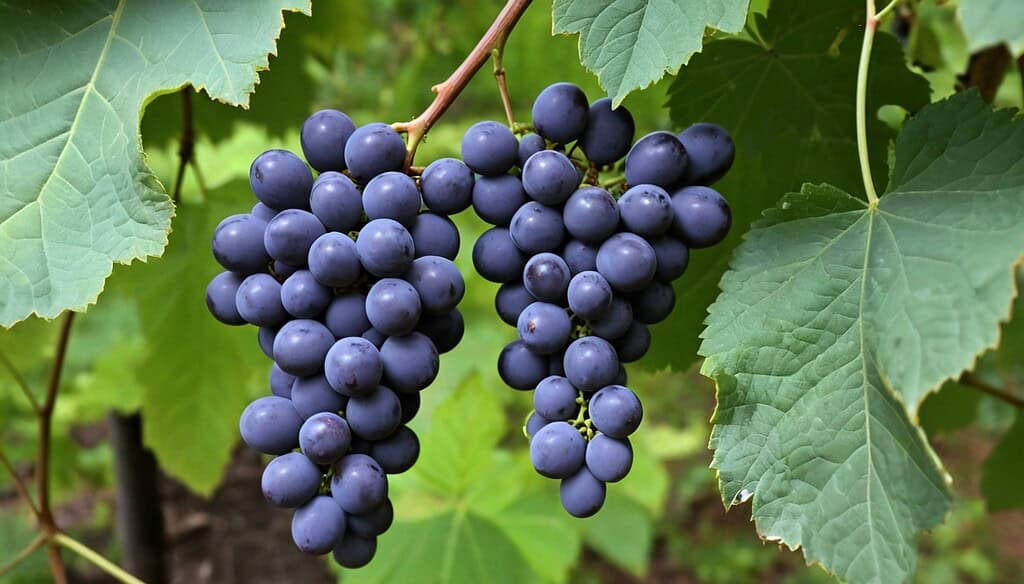
Concord grapes (Vitis labrusca ‘Concord’) are known for having one of the most distinctive flavors in the realm of grapes. Their deep purple-black skin conceals flesh that tastes like concentrated grape juice. The aroma hits you immediately when you open a container, filling the air with intense, sweet-tart fragrance that triggers childhood memories of grape juice and jelly.
The Flavor-Nutrient Learning Theory provides fascinating insight into why humans find Concord grapes so appealing. This theory suggests that we evolved to associate pleasurable flavors with beneficial nutrients. The intense sweetness signals readily available energy, while the complex aromatic compounds hint at the presence of health-promoting phytochemicals.
When you bite into a Concord grape, the skin provides initial resistance before breaking to release the intensely flavored pulp. The seeds, larger and more noticeable than in many varieties, contribute to the full sensory experience. Many people learn to separate the skin and seeds from the flesh, creating a ritual that slows consumption and enhances appreciation.
The nutritional profile of these Vitaceae fruits supports the flavor-nutrient connection perfectly. Concord grapes are a rich source of vitamin K, which is vital for maintaining bone health and facilitating blood clotting. Their manganese content supports enzyme function and antioxidant production. The deep color indicates high levels of anthocyanins, powerful compounds linked to cognitive health and cardiovascular protection.
Research specifically focused on Concord grapes has revealed remarkable health benefits. Studies suggest that regular consumption may improve memory function and slow age-related cognitive decline. The anthocyanins appear to cross the blood-brain barrier, where they protect neurons from oxidative stress and support healthy brain aging.
The cardiovascular advantages of Concord grapes go beyond mere antioxidant effects. Regular consumption has been associated with improved arterial flexibility and reduced blood pressure. The compounds work through multiple pathways, including enhanced nitric oxide production and reduced inflammation in blood vessel walls.
Table 5: Nutritional Highlights of Concord Grapes (per 150g serving)
| Nutrient | Amount | Key Benefits |
|---|---|---|
| Vitamin K | 22 mcg | Blood clotting, Bone health |
| Manganese | 0.2 mg | Enzyme function, Antioxidant support |
| Anthocyanins | 125-180 mg | Brain health, Heart protection |
| Vitamin C | 4.8 mg | Immune support, Collagen synthesis |
| Potassium | 287 mg | Heart function, Blood pressure regulation |
| Natural Sugars | 23 g | Quick energy, Brain fuel |
5. Vitaceae Fruits: Catawba Grapes and the Sweet-Sparkling Balance
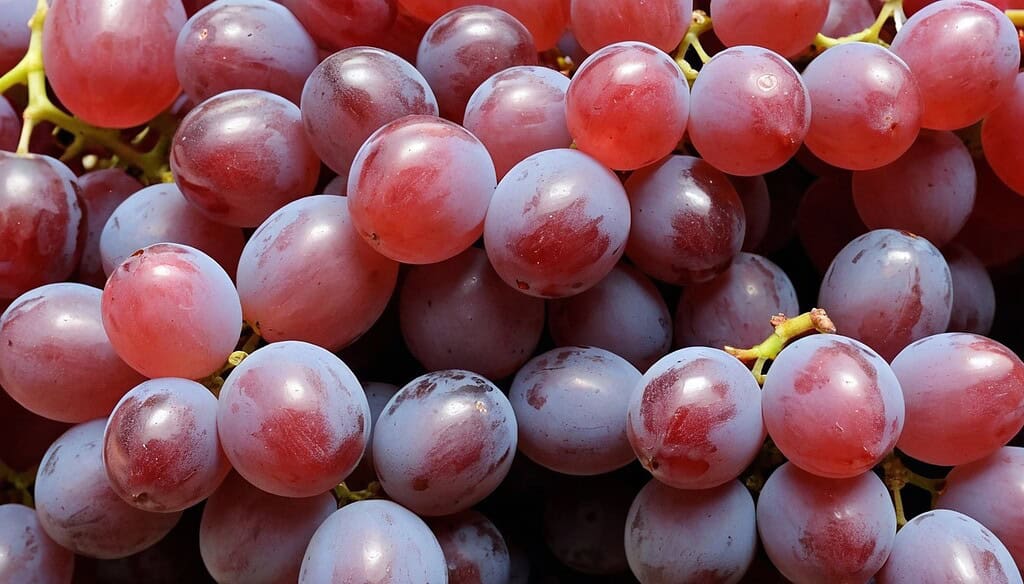
Catawba grapes (Vitis labrusca ‘Catawba’) achieve a refined equilibrium between table fruit and wine grape. Their pinkish-red skin catches light beautifully, while their musky-sweet aroma promises complexity. These Vitaceae fruits played a crucial role in early American winemaking, particularly in Ohio’s Lake Erie region where they thrived in the unique climate.
The taste of fresh Catawba grapes merges vibrant acidity with a floral sweetness. Unlike the strong concentration found in Concord grapes, Catawbas present a more nuanced complexity. The first bite uncovers layers of flavor that develop slowly. The musky character, common to native American grapes, provides earthiness that balances the inherent sweetness.
Historical accounts describe Catawba grapes as the foundation of America’s first commercial wine industry. During the mid-1800s, these grapes produced wines that competed favorably with European imports. The variety’s capacity to mature consistently in difficult climates rendered it essential for early vintners who did not have access to conventional wine grape varieties.
The dual nature of Catawba grapes extends to their nutritional profile. As fresh fruit, they provide excellent hydration and natural energy. The natural sugars offer quick fuel for active lifestyles, while the organic acids support healthy digestion. The pinkish hue suggests a moderate concentration of anthocyanins, offering antioxidant advantages without excessive intensity.
Modern research on native American grape varieties has revealed their unique phytochemical profiles. Catawba grapes contain specific compounds that may support heart health through improved cholesterol metabolism. The balance of sugars and acids creates favorable conditions for beneficial gut bacteria, supporting digestive health and immune function.
The vitamin content of these Vitaceae grapes supports multiple body systems. Vitamin C enhances immune function while supporting collagen production for healthy skin and joints. B-complex vitamins aid energy metabolism and nervous system function. The mineral content, including potassium and magnesium, supports cardiovascular health and muscle function.
Table 6: Catawba Grapes Nutritional and Historical Profile
| Aspect | Details | Historical Significance |
|---|---|---|
| Sugar Content | 18-22 Brix | Ideal for sparkling wine production |
| Acidity Level | 6-8 g/L | Balanced for both eating and winemaking |
| Anthocyanin Content | 15-25 mg/100g | Moderate antioxidant activity |
| Harvest Season | Late September – Early October | Extended growing season adaptation |
| Wine Production Peak | 1850s-1860s | America’s first major wine grape |
| Growing Regions | Ohio, New York, Pennsylvania | Cold climate adaptation |
6. Vitaceae Fruits: Scuppernong Grapes, The Bronze Jewel of the South
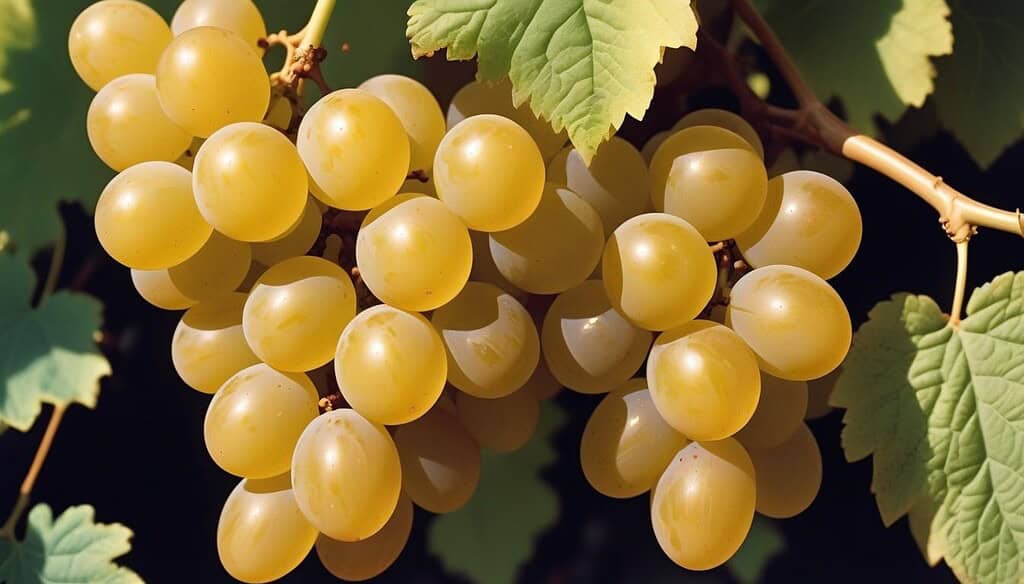
Scuppernong grapes (Vitis rotundifolia ‘Scuppernong’) are regarded as the premier variety among Southern muscadines. Their bronze-gold skin gleams like polished metal in sunlight, while their honey-sweet flavor carries hints of tropical fruit. These Vitaceae fruits have deep cultural roots in the American South, where they grow wild along riverbanks and thrive in cultivated vineyards.
The eating experience of Scuppernongs requires patience and technique. The thick skin must be punctured or bitten to release the intensely sweet pulp inside. Many Southerners develop their own methods, from the gentle squeeze that pops the grape cleanly to the more aggressive bite-and-spit approach. Either way, the reward justifies the effort.
The aroma of ripe Scuppernong grapes carries complex notes that change as you get closer to the fruit. From a distance, they smell sweetly floral with hints of honey. Up close, musky undertones emerge, along with subtle tropical notes reminiscent of pineapple or passion fruit. This aromatic complexity reflects the grape’s unique genetic heritage and adaptation to Southern climates.
Cultural history intertwines deeply with Scuppernong grapes throughout the American South. Native Americans harvested wild muscadines for centuries before European colonization. The early settlers promptly embraced these grapes, acquiring the knowledge to produce wine, jelly, and dried fruit. Many family farms maintained Scuppernong vines that produced fruit for generations.
The polyphenol profile of Scuppernong grapes exceeds that of most cultivated varieties. These compounds, concentrated primarily in the thick skin, provide remarkable antioxidant activity. The anti-inflammatory properties may help reduce chronic disease risk while supporting healthy aging. Research suggests that the unique combination of compounds in muscadine varieties offers superior cellular protection.
Modern nutritional analysis reveals why Scuppernong grapes have sustained human populations for millennia. Natural sugar content of these Vitaceae fruits provides immediate energy, while dietary fiber supports digestive health. The mineral content, particularly potassium and magnesium, supports cardiovascular function. Vitamin C levels remain high even in fully ripe fruit, supporting immune health throughout the harvest season.
Table 7: Scuppernong Grapes Cultural and Nutritional Heritage
| Cultural Aspect | Historical Period | Nutritional Highlight | Health Benefit |
|---|---|---|---|
| Native American Use | Pre-1600s | Wild harvesting techniques | Traditional medicine applications |
| Colonial Adoption | 1600s-1700s | Wine and preserve making | Vitamin C source in winter |
| Plantation Era | 1700s-1800s | Commercial cultivation begins | Antioxidant preservation methods |
| Modern Research | 1900s-Present | Polyphenol identification | Anti-inflammatory properties |
| Current Status | Present | Nutraceutical potential | Chronic disease prevention |
7. Vitaceae Fruits: Isabella Grapes and Their Floral Sweetness
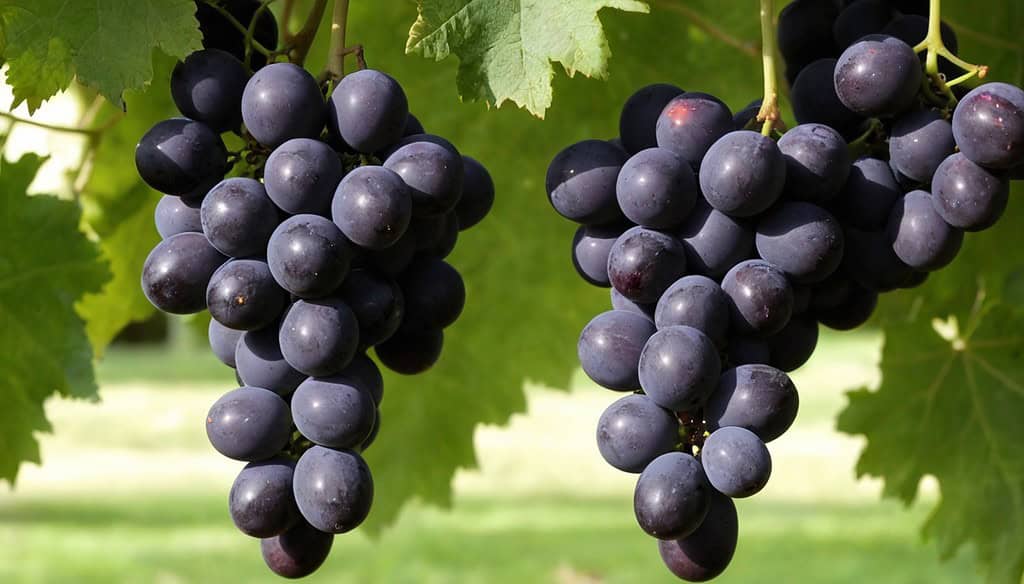
Isabella grapes (Vitis labrusca ‘Isabella’) enchant with their incredibly fragrant aroma and delicate flavor profile. These dark purple Vitaceae fruits release an almost perfume-like scent that can fill a room when ripe. The combination of floral notes with underlying grape intensity creates an olfactory experience unlike any other variety.
The unique texture of Isabella grapes distinguishes them from their sturdier relatives. The skin, while still thick by European standards, yields more easily than muscadines or fox grapes. The flesh inside feels softer and more yielding, almost melting on the tongue. This tender quality makes them excellent for fresh eating, though it also means they require careful handling during harvest and storage. The flavor journey of these Vitaceae grapes unfolds in stages. The initial sweetness gives way to complex floral notes that seem to bloom in your mouth. Some describe hints of rose petals or violet, while others detect subtle spice notes. The finish presents a subtle astringency that refreshes the palate without overpowering the nuanced primary flavors.
Aroma plays a crucial role in flavor perception, and Isabella grapes demonstrate this principle perfectly. The intense fragrance prepares your palate for the complex taste experience that follows. Research shows that aromatic compounds can enhance the perception of sweetness and overall flavor satisfaction, explaining why these grapes seem to taste better than their sugar content alone would suggest.
The anthocyanin content of Isabella grapes contributes both to their deep color and their health benefits. These powerful antioxidants support eye health by protecting retinal cells from oxidative damage. They may also help maintain healthy blood vessels in the eyes, potentially reducing the risk of age-related vision problems.
Anti-inflammatory properties make these Vitaceae grapes particularly valuable for overall wellness. The combination of anthocyanins, flavonoids, and other polyphenols works synergistically to reduce inflammation throughout the body. This effect may help protect against chronic diseases and support healthy aging processes.
Table 8: Isabella Grapes Sensory and Health Profile
| Sensory Characteristic | Description | Related Health Compound | Potential Benefit |
|---|---|---|---|
| Floral Aroma | Rose, violet notes | Terpenes, Esters | Aromatherapy effects, Mood enhancement |
| Sweet-Tart Balance | Gentle acidity | Tartaric acid, Natural sugars | Blood sugar stability |
| Deep Purple Color | Rich anthocyanin content | Malvidin, Cyanidin | Eye health, Vascular support |
| Soft Texture | Tender flesh | Pectin, Cell wall compounds | Digestive comfort |
| Lingering Finish | Complex aftertaste | Phenolic compounds | Antioxidant activity |
8. Vitaceae Fruits: Pinot Noir Grapes in the Context of Resveratrol Pathways
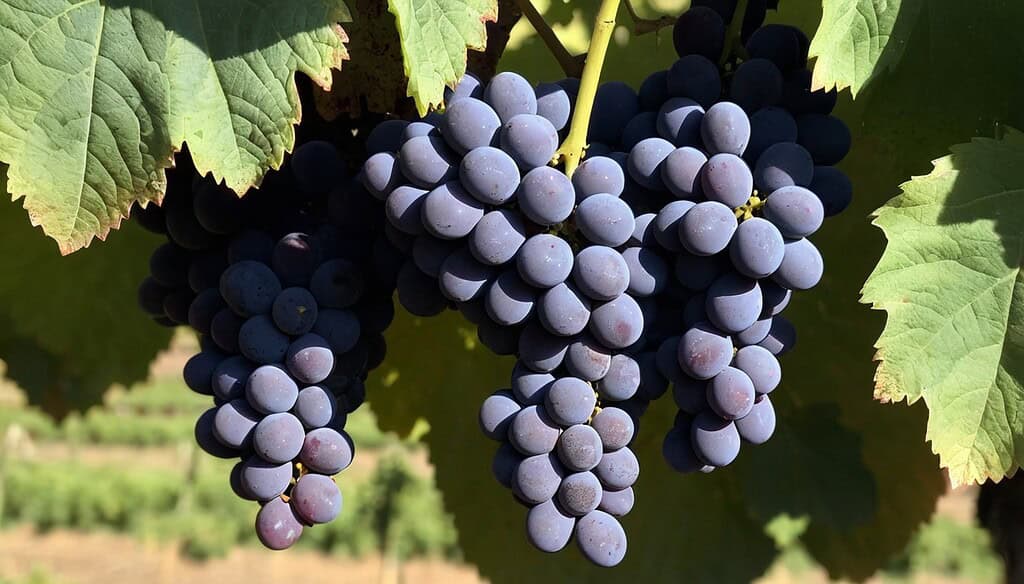
Pinot Noir grapes (Vitis vinifera ‘Pinot Noir’) represent the aristocracy of the grape world. Their thin skins reveal ruby-red flesh that produces some of the world’s most celebrated wines. Even as fresh fruit, these Vitaceae grapes offer elegance and complexity that sets them apart from more common varieties.
The eating experience of fresh Pinot Noir grapes surprises many wine lovers. The flavor profile contains hints of the characteristics that make the wines famous – subtle berry notes, earthy undertones, and a silky texture that coats the mouth gently. The thin skins burst easily, releasing juice with bright acidity balanced by natural sweetness.
The aroma of fresh Pinot Noir grapes carries complexity that foreshadows their wine potential. Berry scents dominate, but careful attention reveals floral notes, hints of spice, and subtle earthy undertones. This aromatic complexity results from the grape’s unique genetic makeup and its sensitivity to growing conditions.
The Sirtuin Activation Pathway provides the scientific framework for understanding Pinot Noir’s health benefits. Sirtuins are proteins that regulate cellular health and longevity. Resveratrol, abundant in Pinot Noir grapes, activates these proteins, potentially supporting healthy aging and cardiovascular function. This mechanism helps explain why moderate wine consumption has been associated with health benefits.
Research on resveratrol has revealed multiple pathways through which this compound supports health. Beyond sirtuin activation, resveratrol demonstrates anti-inflammatory properties and may help protect against certain cancers. The compound appears to work at the cellular level, supporting mitochondrial function and protecting DNA from damage.
The cardiovascular benefits of resveratrol extend beyond simple antioxidant activity. Studies suggest that this compound may help maintain healthy cholesterol levels and support proper blood clotting function. The anti-inflammatory effects may help protect blood vessel walls from damage, reducing the risk of heart disease.
Pinot Noir grapes also contain other beneficial compounds that work synergistically with resveratrol. Flavonoids like quercetin and catechin provide additional antioxidant protection. The combination of these compounds may be more powerful than any single component alone, demonstrating the value of consuming whole foods rather than isolated supplements.
Table 9: Resveratrol and Associated Compounds in Pinot Noir Grapes
| Compound | Concentration (mg/kg) | Primary Pathway | Health Benefit |
|---|---|---|---|
| Resveratrol | 5-12 | Sirtuin activation | Longevity, Cardiovascular health |
| Quercetin | 15-25 | Antioxidant pathways | Anti-inflammatory, Immune support |
| Catechin | 20-40 | Flavonoid metabolism | Heart health, Brain protection |
| Procyanidin B1 | 8-15 | Vascular protection | Blood pressure regulation |
| Anthocyanins | 30-80 | Cellular protection | Eye health, Cognitive support |
| Tartaric Acid | 6000-9000 | Metabolic support | Mineral absorption, pH balance |
Conclusion – Vitaceae Fruits: Where Sensory Pleasure Meets Science
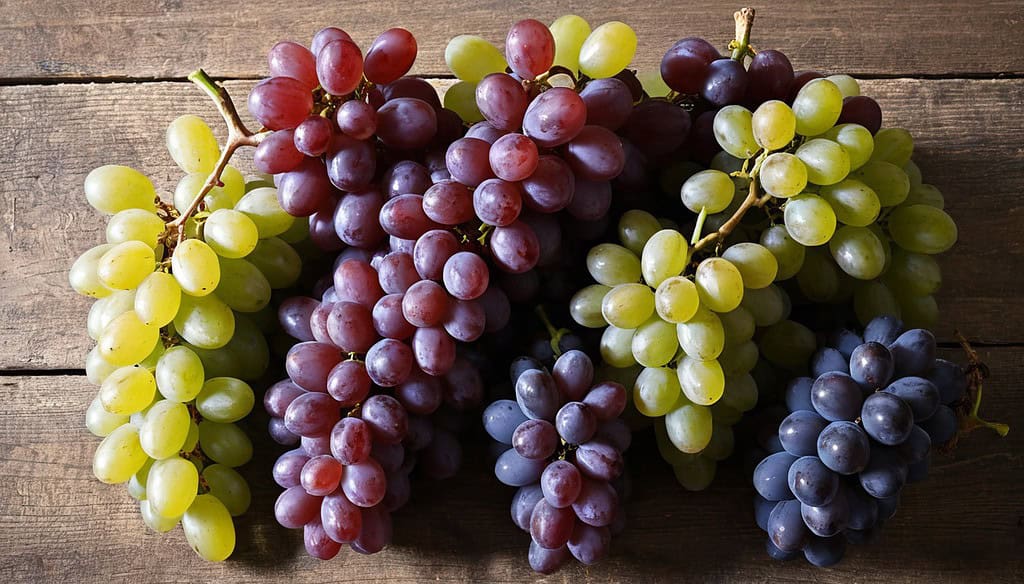
The journey through eight remarkable Vitaceae fruits reveals nature’s genius in creating foods that satisfy both our senses and our bodies’ needs for wellness. Each variety offers unique pleasures while delivering scientifically validated health benefits that support everything from cardiovascular function to cognitive health.
The sensory aspects of these Vitaceae grapes create emotional connections that enhance their nutritional value. When you savor the honey-sweet complexity of a Scuppernong grape or inhale the floral perfume of an Isabella variety, you engage multiple pathways that support both physical and mental well-being. The act of mindful eating, encouraged by these grapes’ complex flavors and textures, may enhance nutrient absorption and satisfaction.
Scientific research continues to reveal new benefits of the compounds found in Vitaceae fruits. From the resveratrol that activates longevity pathways to the anthocyanins that protect brain cells, these natural chemicals represent millions of years of plant evolution creating compounds that happen to benefit human health. The synergistic effects of consuming whole fruits, rather than isolated compounds, demonstrate the wisdom of traditional food choices.
The diversity within the Vitaceae family ensures that everyone can find varieties that match their taste preferences while supporting their health goals. Whether you prefer the crisp refreshment of green grapes or the intense complexity of wild fox grapes, each choice provides unique benefits while contributing to overall wellness.
Cultural connections to these fruits add another dimension to their value. The Scuppernong grapes that sustained early American settlers, the Concord grapes that created childhood memories, and the Pinot Noir grapes that celebrate special occasions all carry stories that enrich our relationship with food and place.
Looking forward, the growing interest in functional foods positions Vitaceae fruits perfectly for continued appreciation. As research reveals more about the connections between diet and health, these naturally nutrient-dense fruits offer delicious ways to support wellness goals. The combination of immediate sensory pleasure with long-term health benefits makes them ideal choices for anyone seeking to improve their diet.
Make room in your life for the full spectrum of Vitaceae fruits. Visit local farmers markets to discover heritage varieties. Plant muscadine vines if your climate allows. Seek out fresh Concord grapes during their brief season. Each variety offers its own gifts, from the simple refreshment of common green grapes to the complex sophistication of wine grape varieties.
Table 10: Summary of Vitaceae Fruits Sensory Characteristics and Key Health Benefits
| Grape Variety | Primary Sensory Appeal | Key Health Compounds | Main Benefits |
|---|---|---|---|
| Green Grapes | Crisp texture, clean sweetness | Vitamin C, Flavonoids | Hydration, Antioxidant support |
| Muscadine | Intense flavor, thick skin | Ellagic acid, Resveratrol | Anti-aging, Cellular protection |
| Fox Grapes | Wild tang, musky aroma | Anthocyanins, Quercetin | Vascular health, Inflammation reduction |
| Concord | Concentrated grape flavor | Vitamin K, Anthocyanins | Brain health, Blood clotting support |
| Catawba | Sweet-tart balance | Balanced minerals, Vitamins | Heart health, Digestive support |
| Scuppernong | Honey sweetness, bronze color | High polyphenols | Anti-inflammatory, Chronic disease prevention |
| Isabella | Floral aroma, tender texture | Eye-supporting anthocyanins | Vision health, Gentle antioxidant activity |
| Pinot Noir | Berry complexity, elegant texture | Resveratrol, Sirtuins activation | Longevity support, Cardiovascular protection |
Disclaimer: This article is for informational purposes only and is not a substitute for professional medical advice. Always consult a qualified healthcare provider for diagnosis or treatment of any medical condition.

